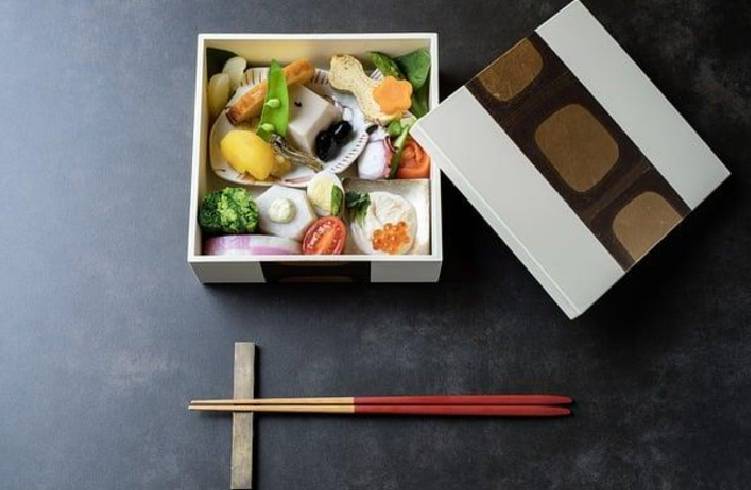Japanese cuisine, known for its simplicity, seasonality, and artful presentation, is one of the most respected and beloved in the world. Behind every bowl of sushi rice or steaming ramen lies a deep history shaped by centuries of cultural, religious, and political change. From the introduction of rice cultivation to the influence of foreign flavours, Japanese food has evolved through periods of isolation and exchange, making it a fascinating reflection of the country’s rich history.
Let’s explore how key historical events have shaped Japanese cuisine, creating the flavours, techniques, and dishes we know today.
1. Rice Cultivation and the Beginnings of Japanese Cuisine
The foundation of Japanese cuisine lies in the Yayoi Period (300 BCE–300 CE), when rice cultivation was introduced to Japan from China and Korea. Wet rice farming became central to Japanese agriculture, marking the beginning of rice as the staple food. This not only transformed the diet of the Japanese people but also established the cultural and spiritual significance of rice in Japan. Today, rice remains a cornerstone of Japanese meals, served in dishes like gohan (steamed rice), onigiri (rice balls), and sushi.
2. The Influence of Buddhism and the Rise of Vegetarianism
The arrival of Buddhism from China and Korea during the Asuka Period (538–710 CE) had a profound impact on Japanese cuisine, particularly in the development of vegetarianism. Buddhism promotes non-violence and discourages the consumption of meat, leading Emperor Tenmu in 675 CE to issue a ban on eating certain types of animals, including cattle and horses. This led to the rise of plant-based dishes such as shōjin ryōri (Buddhist temple cuisine), which emphasized vegetables, tofu, and seasonal ingredients. Shōjin ryōri continues to be a significant part of Japanese food culture, especially in monasteries and during religious festivals.
3. Influence of Chinese Cuisine and Chopsticks
During the Nara (710–794 CE) and Heian (794–1185 CE) periods, Japan began to adopt many cultural practices from China, including the use of chopsticks and the drinking of tea. Japanese elites were heavily influenced by the sophistication of Chinese cuisine and court customs. While Chinese-style dishes became popular in Japan, they were often adapted to suit local tastes, laying the groundwork for what would later become distinctly Japanese flavours.
Tea culture also began to flourish during this period, thanks to the Zen Buddhist monks who brought green tea back from China. Over time, tea drinking evolved into the highly ritualized Japanese tea ceremony, or chanoyu, which remains a central part of Japan’s cultural identity.
4. The Introduction of Soy Sauce, Tofu, and Miso
During the Kamakura Period (1185–1333 CE), the rise of the samurai class and the influence of Zen Buddhism encouraged the consumption of simple, hearty foods. This period saw the popularization of soy-based products such as soy sauce, tofu, and miso. These ingredients, introduced from China, became cornerstones of Japanese cuisine due to their versatility and ability to add deep, umami-rich flavours to dishes.
Soy sauce (or shoyu) became an essential condiment, and miso soup, made from fermented soybean paste, became a staple in everyday meals. These ingredients were particularly valued for their long shelf life, making them ideal for monasteries and samurai households. Today, miso soup and soy sauce remain integral to Japanese cuisine, serving as the base for many dishes, from soups to marinades.
5. Portuguese Influence and the Arrival of Tempura
In the 16th century, Portuguese missionaries and traders arrived in Japan, bringing with them foreign goods and culinary techniques. One of the most lasting legacies of this cultural exchange was the introduction of tempura. The Portuguese technique of frying food in batter was adapted by the Japanese, who used local ingredients like fish and vegetables. This led to the creation of tempura, a beloved dish that remains a staple of Japanese cuisine today.
The Portuguese also introduced sugar to Japan, sparking a love for sweets that would later give rise to wagashi, traditional Japanese confections made from ingredients like rice flour and sweet beans.
6. Edo Period and the Development of Sushi
The Edo Period (1603–1868 CE) was a time of peace and stability in Japan, and it marked the emergence of what we now recognize as modern Japanese cuisine. The bustling city of Edo (now Tokyo) saw the rise of street food culture, where simple, fast, and affordable dishes like sushi and tempura were sold to busy urbanites.
Sushi, as we know it today, began as narezushi, a method of preserving fish by fermenting it with rice. However, in Edo, a new version known as edomae sushi was developed, which used raw fish (like tuna and mackerel) atop vinegared rice. This fast, fresh style of sushi was a hit among city dwellers, and it laid the foundation for the sushi that is now enjoyed around the world.
7. Meiji Restoration and Western Influence
The Meiji Restoration in 1868 marked Japan’s opening to the West after centuries of isolation. This period brought profound changes to Japanese society, including the introduction of Western foods and cooking techniques. Dishes like tonkatsu (breaded and fried pork cutlet), curry rice, and omurice (omelette rice) were inspired by Western cuisine but quickly became adapted to Japanese tastes.
The Meiji government also encouraged meat consumption, previously discouraged under Buddhist influence, as part of its effort to modernize the country. This led to the popularization of beef dishes like gyudon (beef bowl) and sukiyaki, marking a significant shift in Japanese dietary habits.
8. Post-War Era and the Rise of Ramen
After World War II, Japan experienced food shortages, and cheap, filling meals became essential for survival. This was the period when ramen, originally introduced from China, gained popularity as an affordable street food. Ramen shops began to spring up across the country, offering bowls of noodles in rich, flavourful broths with toppings like pork, egg, and seaweed.
By the 1950s, instant ramen was invented by Momofuku Ando, revolutionizing Japanese (and global) cuisine by providing a quick, convenient meal. Today, ramen has evolved into an art form, with countless regional variations and dedicated ramen shops around the world.
9. Modern Japanese Cuisine: Tradition Meets Innovation
In recent decades, Japanese cuisine has experienced a renaissance, blending traditional techniques with modern innovation. The global popularity of sushi, ramen, and tempura has brought Japanese flavours to the world, while at home, chefs experiment with fusion cuisine and new culinary techniques.
Japan’s commitment to seasonality and local ingredients remains a core philosophy, seen in the exquisite kaiseki meals served at fine dining establishments. Meanwhile, street foods like takoyaki, okonomiyaki, and mochi continue to thrive in Japan’s vibrant urban centres.
Japanese cuisine, with its emphasis on harmony, seasonality, and simplicity, is a reflection of the country’s historical evolution. From the early influence of rice farming and Buddhism to the introduction of tempura and sushi, and finally, the blending of Western and Japanese flavours, the food of Japan tells the story of a nation that has continuously adapted to change while preserving its culinary traditions. As Japanese cuisine continues to evolve, it remains deeply connected to the cultural and historical forces that have shaped it over the centuries.

